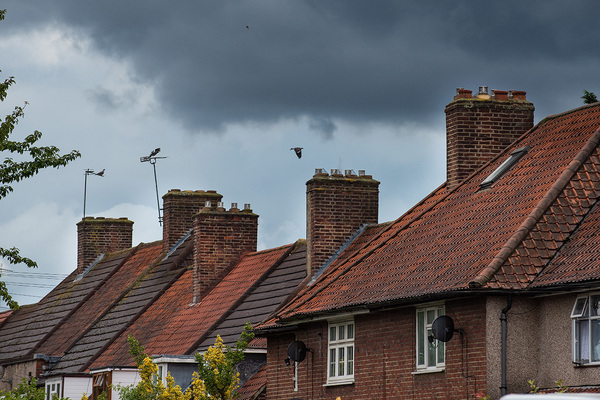Quality matters
The Housing Forum’s Shelagh Grant explains how and why landlords should focus on quality
Article sponsored by:

The quality of housing and places is more important now than ever before – and is especially pressing given the government’s pledge to build 300,000 homes a year by the mid-2020s.
Achieving quality outcomes in housing is a team effort and The Housing Forum’s 2017 report Building Homes Better: The Quality Challenge draws on the experiences of our members, representing the whole breadth of the supply chain. In the report, we argue that both design and build quality are important given housing’s contribution to the built environment and to the lives of those who live in the homes, regardless of tenure.
The government should demonstrate it is prepared to show leadership, as the Ministry of Housing, Communities and Local Government did at its Design Quality Conference, where the housing minister and the secretary of state made rallying calls to the sector. Sajid Javid, then-housing secretary, signalled proposals to strengthen design quality in planning policy while increasing density in urban and well-connected areas.
But can a definition of housing quality be workable? More than a matter of opinion or preference? We think it can.
Making use of the toolkit
As a minimum, housing should improve the street or area, contribute to legacy, remain relevant through periods of change, use durable materials and offer easy maintenance. There should be an appreciation of both design quality and technical quality. By design quality we mean context, urban planning, design and appearance, community, and well-being. Technical quality covers functionality, integrity, longevity, performance and maintenance in use.
We already have the tools to help ensure new developments meet quality standards – for example Building for Life, Passivhaus and the Building Research Establishment’s Home Quality Mark. But these are not widely applied. Design quality standards are rarely stipulated by local planning authorities – yet in London and Manchester, where new build numbers are at volume, quality and design guides based on these standards have had positive impacts. This approach should be followed more widely.
Just as important as the tools, to achieve quality there has to be an explicit commitment from all those involved in a project. For every project, there is a role within the design team for a quality champion, to protect quality elements from start to finish. This would ensure the vision is maintained through to handover and focus more attention on the need to maintain high aspirations.
The tragedy at Grenfell Tower has provided more than enough reason for those involved in housing to focus on quality, but it will be a challenge to move the sector on from lowest-cost tenders and single-stage design-and-build contracts.
The focus of the recent Hackitt Review is not on construction quality in terms of improving processes – but about putting in place tighter regulatory control and monitoring, through a Joint Competent Authority, which would require schemes to be signed off at key gateways. But with tougher penalties promised and systems in place for greater accountability, clients and their construction teams will need to improve their game in build quality.
Better understanding
What does all this mean for landlords and construction companies? In our June 2018 report Stopping Building Failures: How a Collaborative Approach Can Improve Quality and Workmanship, we make several recommendations to drive positive change. We propose a move away from ‘race-to-the-bottom’ procurement towards better value through the use of two-stage tenders and alliancing contracts. We also advocate placing far more emphasis on quality and spending more time developing the brief using value management techniques. Technology such as Building Information Modelling and Design for Manufacture and Assembly will support quality. We also see the benefits of offsite manufactured homes created in factory conditions. But for this to work, housing projects must be commissioned by integrated teams.
In so many aspects, the role of the housing client is key. Clients need a better grounding in the briefing of designers. Conversely, architects and contractors need a better understanding of how landlords will manage and maintain places. Quality must count more than price and cost accuracy can be better achieved with early scenario testing.
Other recommendations are training for in site inspections, using benchmark samples to assess suppliers’ quality, licencing for operatives in life-critical trades and quality ‘hold points’ for checking construction at critical stages.
None of this is new – all these techniques are used in practice and demonstrated in case studies. There are many ways we can improve quality – including better collaboration, improved site practice, promoting good workmanship and pride in the job, specifying better materials, and using technology.
But by far the most important way to drive change is for the project sponsor and stakeholders to define what they value as quality at an early stage and relentlessly use this to inform the whole design and construction process. Quality cannot be sacrificed at the expense of quantity. Nor need it be.
Shelagh Grant, chief executive, The Housing Forum
The right way to innovate
John Churchett, director of social housing and construction, H+H
In recent years we have seen the government set ambitious targets for housing numbers. Innovation and modern methods of construction seem to have become the suggested methods for achieving this goal, with ministers recently calling for the industry to embrace innovation to build the affordable housing that this country desperately needs. However, we first need to ensure that these homes are built to a high standard.
Thankfully, it appears the government has placed emphasis on this as well. Former housing secretary Sajid Javid even went as far as stating that the interest is making sure high-quality design is the norm rather than the exception.
But what does this all look like in practice? Offsite construction has been hailed as the answer to the housing shortage, but at H+H we believe the argument about offsite versus traditional delivery is unhelpful as it ignores the innovation and new ideas that fall somewhere between these two extremes.
It’s widely recognised that the construction industry is slow to change. Offsite is often deemed a dirty word in an industry built on the back of tradition and averse to any variation on standard working practices. Rather than innovating for innovation’s sake, our view has always been to look at developing our traditional practices as a way to bring new techniques to the industry and improve build quality.
With that in mind, innovation is a fundamental principle at H+H and while we manufacture a product that has essentially not changed in more than 60 years, the way we use aircrete has. In a unique collaboration with SIG Offsite, we have worked to produce the SIG I-House System, incorporating storey-high panels of aircrete that are manufactured offsite and delivered ready to be craned into place onto a bed of thin-joint mortar – a breakthrough for the UK market. This system provides a way to build the entire weatherproof structure of a new home on site, from foundations to roof, in one week.
In recent years we have seen an uptake in the use of thin-joint masonry construction on site. Specifically, our H+H thin-joint system is being used on site to gain increased build speeds without sacrificing on build quality.
Thin-joint construction is a modern method that has been used for decades. However, it is still considered innovative and was way ahead of its time when it came to the UK from Europe, where it is the go-to method of building in many countries.
H+H’s thin-joint system combines the use of large-format, accurately dimensioned aircrete blocks and quick-setting thin-layer mortar to create a highly productive and cost-effective building system. It can be used for solid or cavity walls in all types of buildings.
The name thin-joint refers to the thickness of the mortar joint: traditionally mortar joints are
10mm but when using the thin-joint system this is reduced to 2mm. Instead of using traditional sand cement mortar, H+H’s thin-joint system uses Celfix Mortar, which was developed specifically for use with the H+H aircrete blocks. Celfix is cement based and supplied as a dry, pre-mixed powder.
The thin-joint system responds directly to the new focus on speeding up the supply of housing while improving the quality of build and reducing environmental impacts. It allows for construction times to be significantly reduced, by taking the external leaf (brick facade) away from the critical path.









